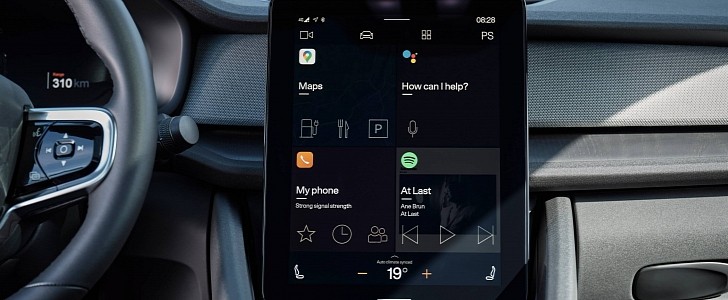Android Automotive represents Google’s big bet in the car market, as it’s offered as a fully featured operating system pre-loaded from the factory and sporting deep integration for its services.
As compared to Android Auto, which requires a mobile device to mirror the Android experience on the larger screen in the cabin, Android Automotive is pre-loaded with the head unit, therefore benefitting from access to vehicle functions, including the climate controls and battery information.
Just like Android itself, Android Automotive itself is also evolving, and the most recent update comes with several notable improvements.
Android Automotive 13, whose changelog was revealed by Google earlier this week, includes driving safety region support, essentially allowing apps to specify the regions for driving safety. Furthermore, the update includes UWB support, which essentially paves the way for the introduction of new-generation capabilities, such as digital keys.
Google claims the new version of Android Automotive offers more control of the shutdown process, which means that vendors themselves can now configure a series of actions that can be triggered before and after triggering the Garage Mode.
Just as expected, Android Automotive 13 also comes with a series of privacy improvements, including a dedicated dashboard that shows the recent app permissions and the information that apps have accessed, such as the location, the microphone, and the camera.
And last but not least, the new Android Automotive release enables OEM telemetry, which basically means that OEMs can rely on the infotainment system where the operating system is installed to collect vehicle data.
Needless to say, carmakers themselves are the ones that need to deliver the update to Android Automotive 13 to their customers, but this release obviously can’t take place overnight. Most likely, the first cars should start getting the new operating version before the end of the year, with more companies to offer Android Automotive pre-installed on their models beginning with 2023.
Just like Android itself, Android Automotive itself is also evolving, and the most recent update comes with several notable improvements.
Android Automotive 13, whose changelog was revealed by Google earlier this week, includes driving safety region support, essentially allowing apps to specify the regions for driving safety. Furthermore, the update includes UWB support, which essentially paves the way for the introduction of new-generation capabilities, such as digital keys.
Google claims the new version of Android Automotive offers more control of the shutdown process, which means that vendors themselves can now configure a series of actions that can be triggered before and after triggering the Garage Mode.
Just as expected, Android Automotive 13 also comes with a series of privacy improvements, including a dedicated dashboard that shows the recent app permissions and the information that apps have accessed, such as the location, the microphone, and the camera.
And last but not least, the new Android Automotive release enables OEM telemetry, which basically means that OEMs can rely on the infotainment system where the operating system is installed to collect vehicle data.
Needless to say, carmakers themselves are the ones that need to deliver the update to Android Automotive 13 to their customers, but this release obviously can’t take place overnight. Most likely, the first cars should start getting the new operating version before the end of the year, with more companies to offer Android Automotive pre-installed on their models beginning with 2023.










